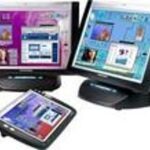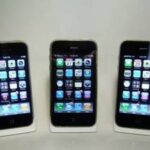Lion First Things
Installing Mac OSX Lion on a non-mac computer isn’t as straightforward as popping a Windows 7 dvd installer and booting from it. You might have gotten hold of a Lion dvd installer from a friend and maybe surprised to find out that it doesn’t seem to boot. It’s perfectly all right. Nothing’s wrong with the installer or your drive. It’s just that there are things you need to know first before booting.
Apple planned to distribute Lion solely on their Mac App Store. This mean that you can only download it and install to your existing mac computer. It also mean that you can only download it using an existing Mac OSX Snow Leopard version 10.6.8.
Let’s say you’ve already installed Snow Leopard the next obvious thing to do is to purchase a Lion installer from the Mac App Store. Latest version is 10.7.4, costs just 29 dollars and is around 3.7 gigabytes. After the download finishes the installer should appear in your Application folder. Now let’s take a few steps backward and for simplicity’s sake, say you have a single hard drive that you’re willing to commit only for Lion. You’ve installed Snow Leopard into and erase that installation. Now before you double-click the Lion installer we need a few things to download online. One important thing is to download xMove from tonymacx86 web site. This site provides our resources should we need some help relating to installation and other issues we encounter and so it’s essential to register. While you’re at it download Multibeast and rBoot. Save these files to a flashdrive.
What to do next is to first burn rBoot. You may use another computer here and use your favorite software for burning or you may use the Disk Utility application that came with your Snow Leopard installation. To use the Disk Utility here are the steps:
- On your Application folder, open Utilities folder and click Disk Utility.
- Open the folder from which you downloaded rBoot then drag rBoot to the left sidebar of Disk Utility.
- Now rBoot appears below the drives list. Select rBoot in the sidebar and from the toolbar click Burn. Wait a couple of minutes and you’re done.
Now we’re actually a few steps to double-clicking the lion installer. We will create an extra drive using the Disk Utility once more. Here are the steps:
- If you have already closed the Disk Utility open it again. On the left sidebar choose the uppermost drive icon that names your computer’s hard drive.
- On the right sidebar you’ll notice a few tabs one of which is named “Partition”. Click that and you’ll see some info about your drive. The blue color over a white box indicates where your snow leopard is installed. Click anywhere inside the box.
- Now click the “+” button below the blue colored box once. Notice that this time the whole box is divided into two.
- Click that new box and on the Partition Information name it “Install”. Choose “Mac Os Extended (Journaled)” on the Format pane and on the Size pane type “8” without the quotation marks. Note that the box turns into a small rectangle indicating a small partition.
- Click Apply and wait a few seconds for the disk utility to finish.
These steps are similar to prepping your hard drive for installing Snow Leopard except that you would open the Disk Utility within the OSX installer’s menu. An additional step is also needed – after step 4, click the Options button and select GUID Partition if it’s not selected already.
At this point, if you haven’t got a bootable lion installer dvd yet, we will make one using the installer we downloaded a while ago, This will also save us a copy of the installer should we like to install lion on another computer. Here’s how:
- On your Application folder, right click the lion installer. Select “Show Package Contents”.
- In the folder that appears, open Contents, then open Shared Support, you’ll see a disk-image file called InstallESD.img
- Launch Disk Utility and drag the InstallESD.img into Disk Utility’s left sidebar.
- Select InstallESD.img on the sidebar then click Burn button in the toolbar.
- When prompted, insert a blank dvd and click Burn.
Now we can install Mac OSX Lion. Double-click the installer and wait for it to finish and it will automatically reboot the computer. After rebooting, you’ll notice that nothing seem to happen. The installer just copied a few files needed for the actual installation.
We’re getting closer to the actual installation but there’s one more thing to do – install xMove. For installing xMove refer to the instructions found on tonymacx86 website. It’s fairly easy and you can do it in just a few simple steps. What xMove does is simply move the files copied earlier by the installer to the new drive we named as Install. It will also make use of the Lion dvd installer that we just created so you should place it on your dvd drive while running xMove.
Finally after installing xMove, pop in the rBoot cd that we burned earlier. We’re going to boot from that cd. Reboot your computer, Make sure to first enter the BIOS setup of your computer and confirm that the first boot device is set to your dvd drive, Refer to your computer’s manual on how to access the BIOS. While you’re in the BIOS setup screen look for and set the SATA configuration to AHCI instead of the default IDE. When you are done save and exit the BIOS setup screen. The computer automatically reboots.
Once you booted from rBoot you should see three bootable drives – one is rBoot itself, the drive where your snow leopard is installed, and the drive we created named Install. Move your keyboard’s side arrow and choose Install and press Enter or Return.
Congratulations! You just entered the Mac OSX Lion installation. Once you’re in the setup screen open Disk Utility from the Utilities menu and on the Disk Utility’s left sidebar this time select the drive icon where you installed snow leopard and erase that drive making sure the Mac OS Extended (Journaled) is still selected. When done exit Disk Utility and continue with the installation. The installer will ask you where you want to install Lion. Choose the drive you’ve just erased. It takes about twenty minutes for the installation to complete after which the installer automatically reboots your computer.
After rebooting, in the rBoot screen choose the drive where you installed Lion and press Enter. Since this is the first time Lion is run you will be greeted with information regarding your computer such as the keyboard type used if it’s not automatically detected or you’ll be directed to enter information about yourself, etc. Then comes the login window and voila – the main OSX window. Congratulations once again – you’ve just installed Mac OSX Lion!
You may have to repeat the above steps (i.e., booting from rBoot) until such time you are confident on using MultiBeast. Depending on the type of computer you use, one important suggestion would be to read thoroughly the documentation that comes with MultiBeast and on tonymac’s website regarding the drivers that you will install eventually for your computer. BTW drivers in the mac world are called “kexts” (short for kernel extensions) and as the title of this article pertains to non-mac computers, the internet community calls it “Hackintosh” as in ” I installed OSX on my hackintosh”. There’s lots of information out there about building your own hackintosh so you won’t run into compatibility problems. Be sure to check out forums on this websites. One last note – you might run into what is called a “DSDT” (Differentiated System Definition Table). This is an important file that makes your computer an authentic mac. Be sure to do some research on this one too.



